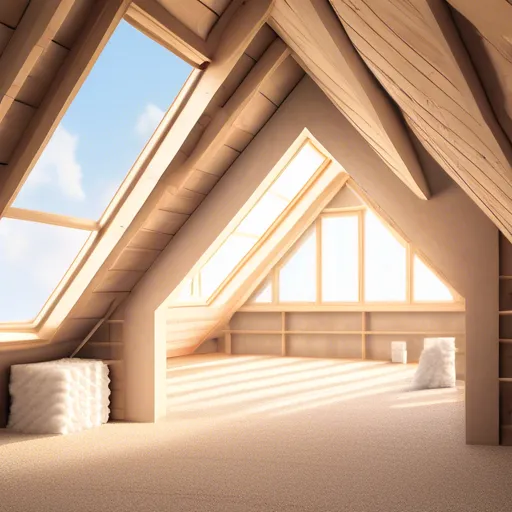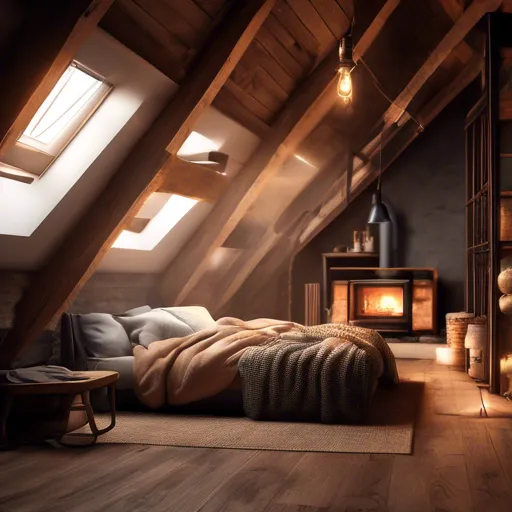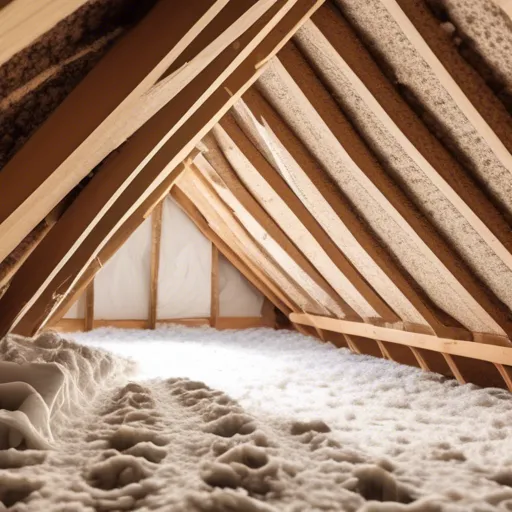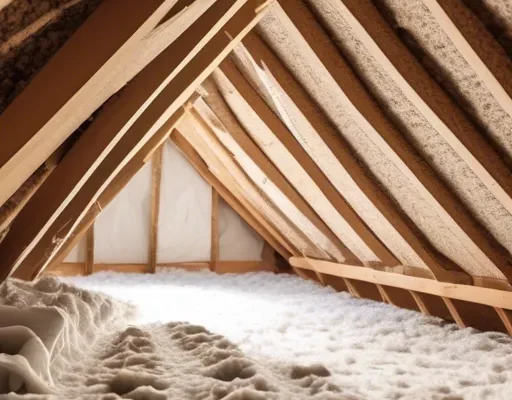If you’ve ever weathered a winter in a drafty home, you’ll know the importance of proper attic insulation. It’s a cornerstone in the battle against heat loss, but beware: insulating your attic comes with its own set of challenges. Navigating these can be as tricky as a game of Whac-A-Mole. Yet fear not! We’re here to guide you through common problems and their practical solutions, ensuring your attic doesn’t just look snug, but it stays that way too.

Understanding the Insulation Game
Insulation is more than just stuffing your attic with as much pink fluff as it can hold. It’s about maintaining the delicate balance of energy efficiency, ventilation, and moisture control. Let’s explore these in more detail.
The Energy Efficiency Puzzle
At the core of attic insulation is energy efficiency. Proper insulation means that your home stays warmer in the winter and cooler in the summer, slashing your energy bills. But how do we make sense of this puzzle?
- Choose the right material: From fiberglass batts to spray foam, selecting the right type of insulation is crucial. Each material comes with its pros and cons, so weigh them carefully.
- R-Value matters: The thermal resistance, or R-Value, indicates how well an insulation material can resist heat flow. The higher the R-Value, the better the insulation.
- Avoid gaps and compressions: Ensure the insulation is laid without gaps or compressions for optimal efficiency.

Ventilation: The Forgotten Element
Ventilation might seem counterintuitive when discussing insulation, but it’s crucial for preventing moisture buildup and maintaining indoor air quality. Poor ventilation can lead to mold growth, structural damage, and even health issues.
- Balance intake and exhaust: Proper attic ventilation systems require a balanced intake of fresh air and exhaust for stale air.
- Use vent baffles: These devices ensure that insulation materials don’t block ventilation paths.
Did you know? The average home can lose up to 20% of its heating and cooling energy through uninsulated and under-insulated attics.
Moisture Control: The Silent Menace
Do you hear that faint drip-drip-drip? Beware: it could be silent water damage. Moisture control in attics is paramount to avoid becoming a homeowner horror story.
- Install vapor barriers: These act as shields against moisture seeping into the insulation.
- Seal air leaks: Small cracks and gaps can let in moisture and outside air, undermining the effectiveness of insulation.

Tackling Common Challenges
Now, let’s confront some of the most common headaches homeowners face when insulating attics.
Pests: Unwanted Attic Roommates
Insulation gives an open invitation to pests looking for a cozy home. Birds and rodents can cause chaos by burrowing through the insulation.
- Conduct regular inspections: Periodically check for signs of infestations such as droppings or gnawed materials.
- Steel wool for the win: Block entry points with steel wool backed by spray foam for added protection.
Old, Worn Out Insulation
Time makes fools of us all, and attic insulation is no exception. Years of wear and tear can leave it less effective.
- Replace deteriorating insulation: If it’s over 20 years old, it’s time for an upgrade.
- Layer on more: Bring old attics up to standard by adding fresh layers of insulation to boost R-Value.

Looking Beyond the Attic: Inspiration Awaits
If you’re inspired to improve other areas of your home, why not explore some creative backsplash tile laying styles or learn how to create beds in a greenhouse with your own hands? While you’re at it, those pillows? Yes, you can tackle yellow stains effectively too!
Insulating your attic is a complex endeavor fraught with challenges, but armed with the right knowledge and tips, it’s a feasible DIY project or discussion to have with a trusted professional. In so doing, you’ll ensure your home remains efficient and comfortable, fighting against both nature and time to stand resilient through the seasons.
